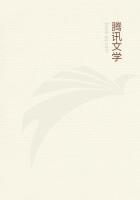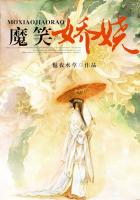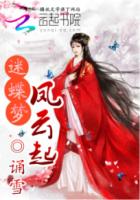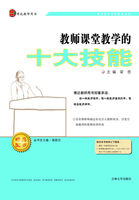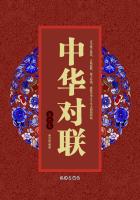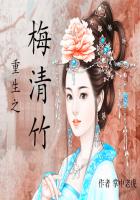In sum, whiteness has existence because it is bound up with Being and present in it: Being is, thus, the source of its existence.Being is Being on its own account, but the white is due to whiteness- not because it is "present in" whiteness, but because whiteness is present in it.
The Being of the Sensible resembles the white in not originating in itself.It must therefore be regarded as dependent for its being upon the Authentic Being, as white is dependent upon the Authentic Whiteness, and the Authentic Whiteness dependent for its whiteness upon participation in that Supreme Being whose existence is underived.
7.But Matter, it may be contended, is the source of existence to the Sensible things implanted in it.From what source, then, we retort, does Matter itself derive existence and being?
That Matter is not a Primary we have established elsewhere.If it be urged that other things can have no subsistence without being implanted in Matter, we admit the claim for Sensible things.But though Matter be prior to these, it is not thereby precluded from being posterior to many things-posterior, in fact, to all the beings of the Intellectual sphere.Its existence is but a pale reflection, and less complete than that of the things implanted in it.These are Reason-Principles and more directly derived from Being: Matter has of itself no Reason-Principle whatever; it is but a shadow of a Principle, a vain attempt to achieve a Principle.
But, our critic may pursue, Matter gives existence to the things implanted in it, just as Socrates gives existence to the whiteness implanted in himself? We reply that the higher being gives existence to the lower, the lower to the higher never.
But once concede that Form is higher in the scale of Being than Matter, and Matter can no longer be regarded as a common ground of both, nor Substance as a genus embracing Matter, Form and the Couplement.True, these will have many common properties, to which we have already referred, but their being [or existence] will nonetheless be different.When a higher being comes into contact with a lower, the lower, though first in the natural order, is yet posterior in the scale of Reality: consequently, if Being does not belong in equal degrees to Matter, to Form and to the Couplement, Substance can no longer be common to all three in the sense of being their genus: to their posteriors it will bear a still different relation, serving them as a common base by being bound up with all alike.Substance, thus, resembles life, dim here, clearer there, or portraits of which one is an outline, another more minutely worked.By measuring Being by its dim manifestation and neglecting a fuller revelation elsewhere, we may come to regard this dim existence as a common ground.
But this procedure is scarcely permissible.Every being is a distinct whole.The dim manifestation is in no sense a common ground, just as there is no common ground in the vegetal, the sensory and the intellectual forms of life.
We conclude that the term "Being" must have different connotations as applied to Matter, to Form and to both conjointly, in spite of the single source pouring into the different streams.
Take a second derived from a first and a third from the second: it is not merely that the one will rank higher and its successor be poorer and of lower worth; there is also the consideration that, even deriving from the same source, one thing, subjected in a certain degree to fire, will give us an earthen jar, while another, taking less of the heat, does not produce the jar.
Perhaps we cannot even maintain that Matter and Form are derived from a single source; they are clearly in some sense different.
8.The division into elements must, in short, be abandoned, especially in regard to Sensible Substance, known necessarily by sense rather than by reason.We must no longer look for help in constituent parts, since such parts will not be substances, or at any rate not sensible substances.
Our plan must be to apprehend what is constant in stone, earth, water and the entities which they compose- the vegetal and animal forms, considered purely as sensibles- and to confine this constant within a single genus.Neither Matter nor Form will thus be overlooked, for Sensible Substance comports them; fire and earth and the two intermediaries consist of Matter and Form, while composite things are actually many substances in one.They all, moreover, have that common property which distinguishes them from other things:
serving as subjects to these others, they are never themselves present in a subject nor predicated of any other thing.Similarly, all the characteristics which we have ascribed to Substance find a place in this classification.
But Sensible Substance is never found apart from magnitude and quality: how then do we proceed to separate these accidents? If we subtract them- magnitude, figure, colour, dryness, moistness- what is there left to be regarded as Substance itself? All the substances under consideration are, of course, qualified.
There is, however, something in relation to which whatever turns Substance into qualified Substance is accidental: thus, the whole of fire is not Substance, but only a part of it- if the term "part" be allowed.
What then can this "part" be? Matter may be suggested.But are we actually to maintain that the particular sensible substance consists of a conglomeration of qualities and Matter, while Sensible Substance as a whole is merely the sum of these coagulations in the uniform Matter, each one separately forming a quale or a quantum or else a thing of many qualities? Is it true to say that everything whose absence leaves subsistence incomplete is a part of the particular substance, while all that is accidental to the substance already existent takes independent rank and is not submerged in the mixture which constitutes this so-called substance?


